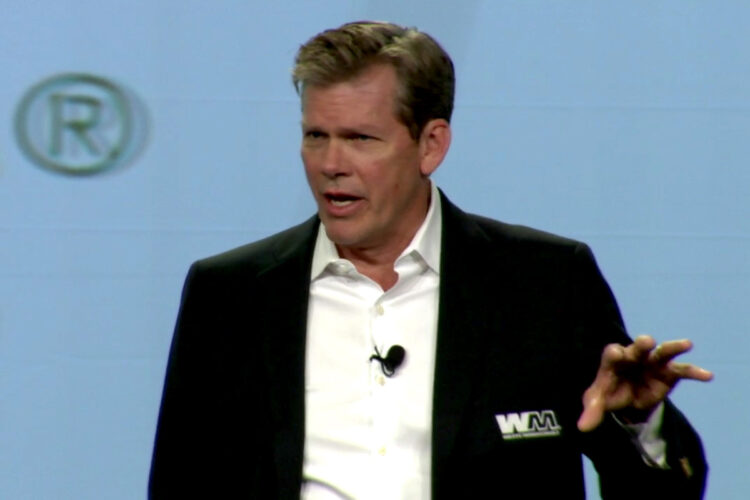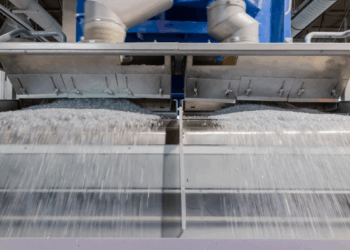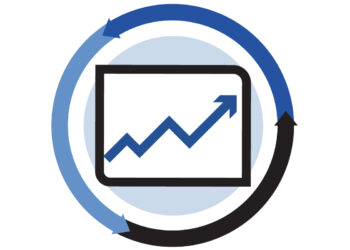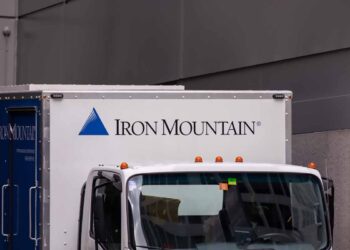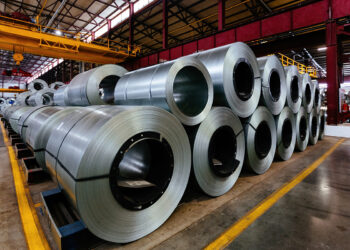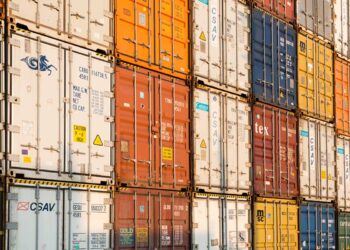Waste Management invested millions of dollars into recycling in 2018, and the year to come will bring the company’s “largest residential recycling investment” to date, company leaders said.
The spending increase was prompted largely by the market downturn that has enveloped the recycling industry over the past 18 months. This began when officials in China announced restrictions on importing recyclables into China, which had been the largest buyer of recovered materials worldwide.
“This has been the topic du jour every day in the recycling industry for the past year,” Jim Fish, CEO of Waste Management, said at the company’s annual sustainability forum last week.
At the event, Fish and other company officials elaborated on Waste Management’s activities spurred by changing markets, as well as how it is preparing for material streams of the future.
Market shifts and investments
Waste Management and its customers have “fared better than most” amid the market shift, Fish said, and that’s largely due to the company’s move away from export markets.
The company, the largest residential recycling company in North America, currently sells all of its recovered plastic from residential programs into domestic markets. Two-thirds of the recovered paper it produces goes to U.S. buyers and the remainder goes to markets across the globe. Fish described that ratio as a “huge change from several years ago.”
Elsewhere during the forum, Brent Bell, vice president of recycling for Waste Management, described the company’s early reactions to the impact of China’s policy changes. At one point, he had to go to top Waste Management leadership and explain the market changes would mean a $100 million earnings impact in 2018.
“That was big news for us,” he said.
Rather than divest from recycling, however, the company has sunk a significant sum of money into improving its materials recovery. In 2018 alone, Waste Management invested $66 million in additional recycling processing equipment and technologies, Fish said, and another $46 million in trucks, carts and other collection infrastructure, for a total of more than $110 million in recycling investments throughout the year.
“That’s more than any other U.S. company or investment fund and it’s no small feat,” Fish said. “It’s important to our customers and it is indeed building a sustainable business model for recycling.”
Robots and the future
Nor is the company’s recycling spending complete.
“When we’re looking out to 2019, the markets don’t look that much better than what they did in 2018,” Bell said. “However, we are continuing to invest in items that will make our programs more sustainable for years to come.”

He announced that Waste Management will have three sorting robots in use at its MRFs by the end of the current quarter. The company had one robot installed last year, Bell said, and company officials have been able to collect data and productivity statistics for the full-year period to evaluate the equipment’s performance. Besides robots, the company is installing additional screens, optical sorters and more.
In 2018, the company initiated a major recycling facility pilot project. The company’s recycling business had a vision for a facility that could combine advancing data collection and technology to create a highly efficient operation producing the highest-quality materials. The team envisioned a facility that can handle “not just today’s materials but material as that stream evolves into the future,” Bell said.
The project came before the company’s senior leadership team and it was “wholeheartedly approved,” Bell said. Today, the facility is in place and equipment is arriving and being installed daily, he added. He described the project as “Waste Management’s largest residential recycling investment” to date.
Bell didn’t elaborate on facility specifics, but he said the company plans to have an update on project results by next year’s sustainability forum.
Secure demand is key
Part of the reason Waste Management can confidently invest in facility improvements is because of partnerships it has with downstream processors.
As an example of demand that has allowed Waste Management to continue collecting some of the hard-to-recycle mixed plastics, Bell pointed to the company’s relationship with Troy, Ala.-based KW Plastics. Waste Management has numerous relationships with plastics buyers, but Bell highlighted KW because the company handles traditionally hard-to-recycle materials. KW, which is among the largest plastics recycling companies in North America, takes tubs and lids of PE and PP from Waste Management. They’ve been doing business together since 2009.
In a video shown during Bell’s presentation, Stephanie Baker of KW Plastics elaborated on the company’s operations. Many suppliers bring in larger packaging items such as detergent bottles and milk jugs, Baker said. “But we decided that we needed to look beyond that, because our demand was so high,” she said.
KW takes a wide variety of plastics, including items as small as yogurt cups. Even these materials, Baker explained, have “tremendous value inside the recycling bin.”
When the companies began their business relationship, Waste Management made certain adjustments at its MRFs to create PP bales.
“Because their business is going so well, we’re adding equipment in to continue to sort polypropylene at our plants so that we can help feed that domestic market they’ve created,” Bell said.
KW’s pellets go into a wide array of products, including razor handles, toothbrushes, home goods, automotive parts, storage boxes, shelving and more. One particularly notable end use is a paint container made in house by KW’s sister company, KW Container. There, pellets are used to create plastic paint cans that are 100 percent recycled.
Top photo credit: Screenshot of video; Bottom photo credit: Brian Adams Photo/Resource Recycling Conference







